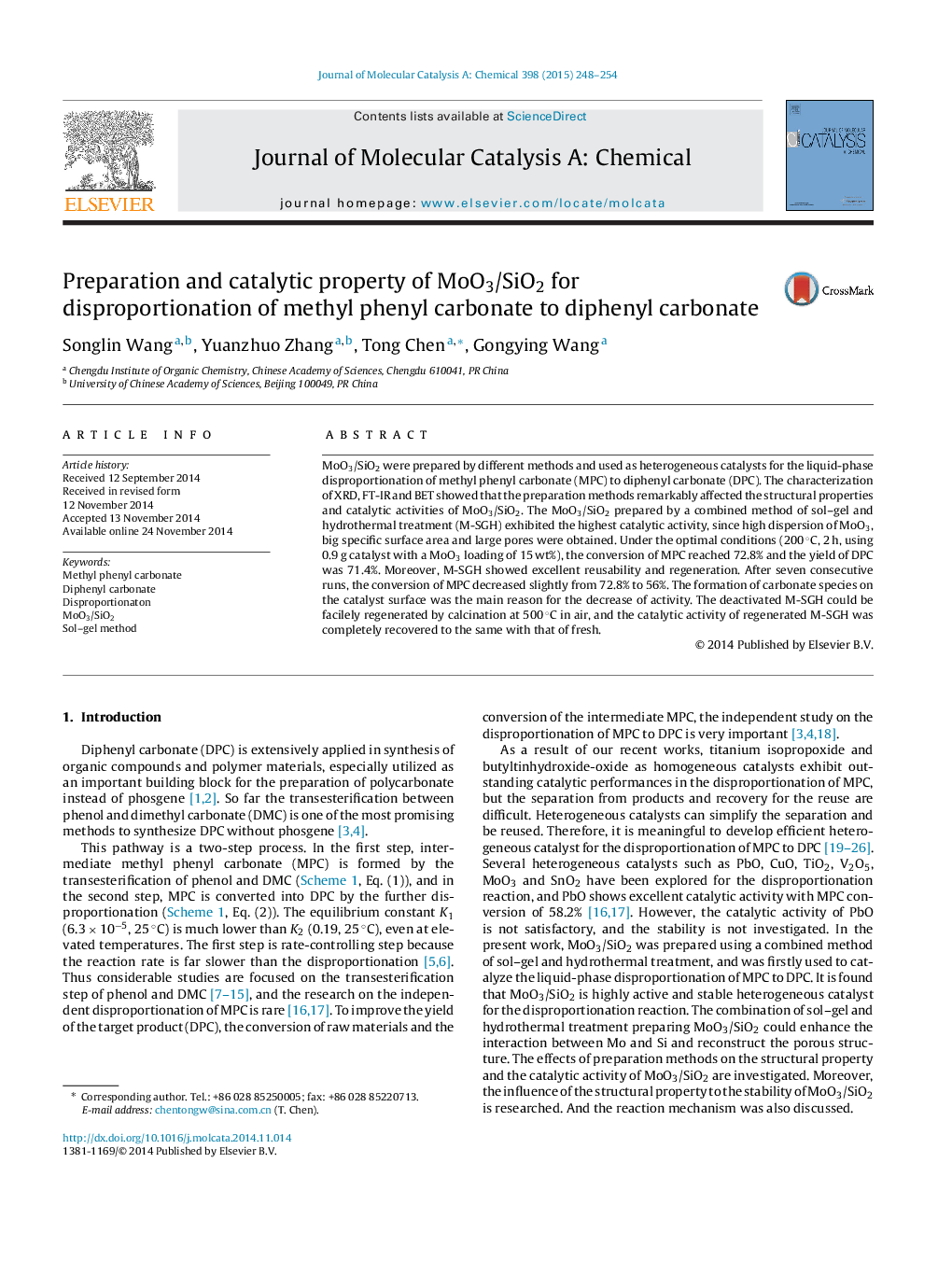| Article ID | Journal | Published Year | Pages | File Type |
|---|---|---|---|---|
| 65221 | Journal of Molecular Catalysis A: Chemical | 2015 | 7 Pages |
•Sol–gel and hydrothermal treatment is firstly combined to prepare MoO3/SiO2.•Specific surface area is improved by the combined preparation method.•High catalytic efficiency is obtained over MoO3/SiO2.•MoO3/SiO2 exhibits excellent reusability and regeneration.
MoO3/SiO2 were prepared by different methods and used as heterogeneous catalysts for the liquid-phase disproportionation of methyl phenyl carbonate (MPC) to diphenyl carbonate (DPC). The characterization of XRD, FT-IR and BET showed that the preparation methods remarkably affected the structural properties and catalytic activities of MoO3/SiO2. The MoO3/SiO2 prepared by a combined method of sol–gel and hydrothermal treatment (M-SGH) exhibited the highest catalytic activity, since high dispersion of MoO3, big specific surface area and large pores were obtained. Under the optimal conditions (200 °C, 2 h, using 0.9 g catalyst with a MoO3 loading of 15 wt%), the conversion of MPC reached 72.8% and the yield of DPC was 71.4%. Moreover, M-SGH showed excellent reusability and regeneration. After seven consecutive runs, the conversion of MPC decreased slightly from 72.8% to 56%. The formation of carbonate species on the catalyst surface was the main reason for the decrease of activity. The deactivated M-SGH could be facilely regenerated by calcination at 500 °C in air, and the catalytic activity of regenerated M-SGH was completely recovered to the same with that of fresh.
Graphical abstractFigure optionsDownload full-size imageDownload high-quality image (230 K)Download as PowerPoint slide
